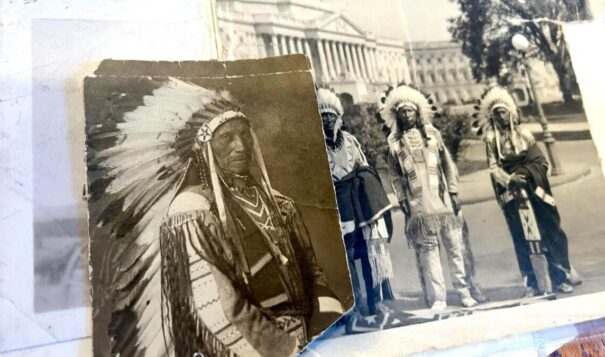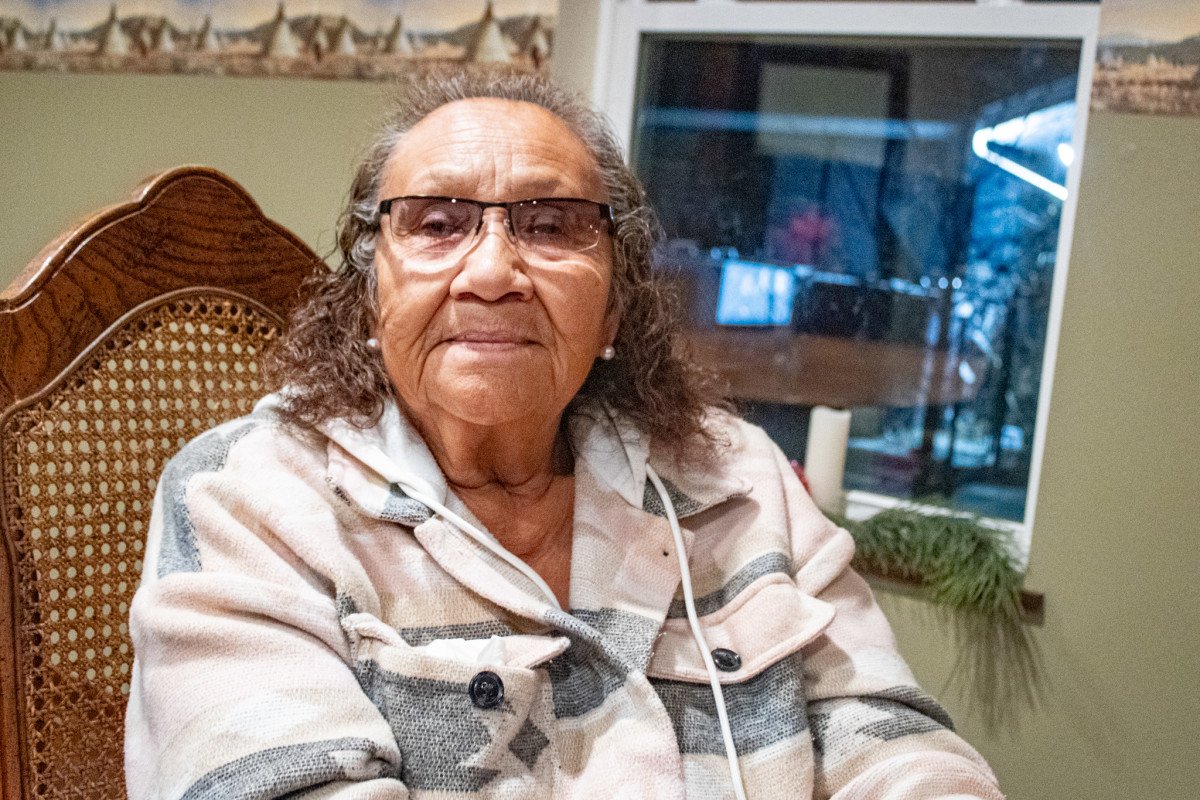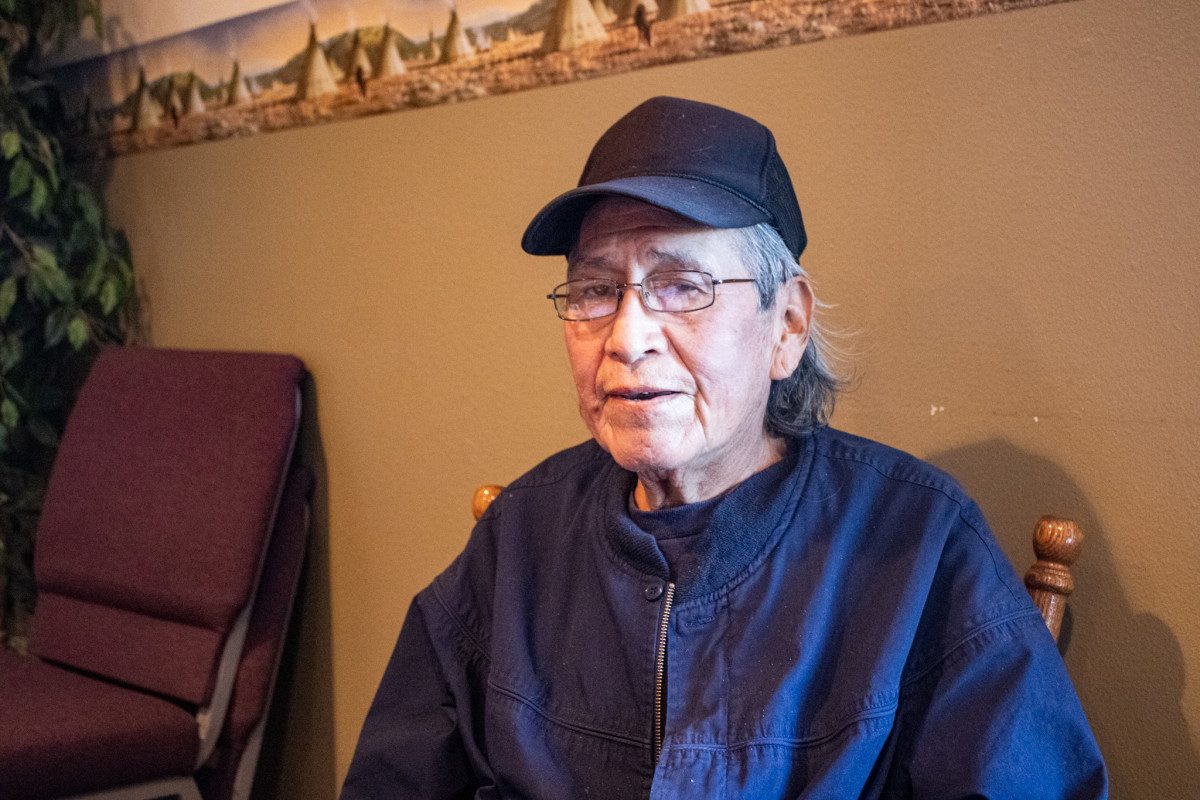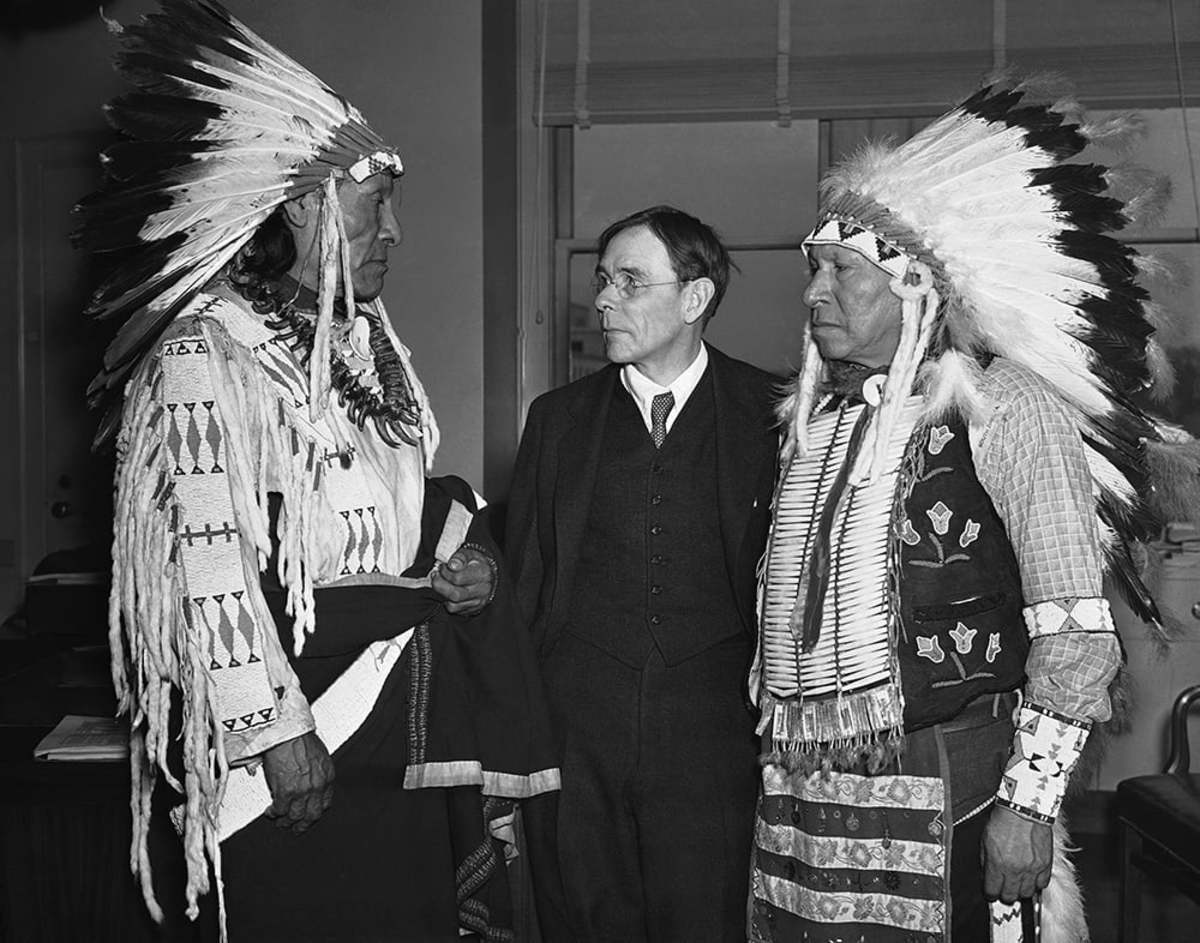News Based on facts, either observed and verified directly by the reporter, or reported and verified from knowledgeable sources.
Stories from Wounded Knee 133 years later
 Several survivors of the Wounded Knee Massacre visited the United States Congress in the late 1930s to discuss what happened that day. (Photo by Amelia Schafer, ICT/Rapid City Journal)
Several survivors of the Wounded Knee Massacre visited the United States Congress in the late 1930s to discuss what happened that day. (Photo by Amelia Schafer, ICT/Rapid City Journal)
Chief Spotted Elk/Big Foot descendants gather to discuss Wounded Knee
As gunfire broke out, the nine-year-old boy began to run. Temperatures were below freezing. All he had were the clothes on his back and a knife as he ran through the open hills of the Pine Ridge Reservation.
Frank Sits Poor, part of Chief Spotted Elk’s (nicknamed Big Foot by the military) band of Mniconju Lakota, was out of his element. His family had traveled south seeking safety in the Badlands. Instead, the United States military moved the band to a small creek in the southern part of the Pine Ridge Reservation, Wounded Knee Creek, awaiting further relocation.
The boy ran over bodies of dead relatives, babies and mothers, and didn’t stop running until night came. One of the bodies he ran past was a mother with a baby in a cradleboard. A hand reached up, but he didn’t know what to do.
“His only thought was how to get out of the cold,” said his granddaughter Genevieve Chase In Sight-Ribitish. “He saw a buffalo lying there and he cut it open, gutted it, climbed in and fell asleep. When he woke up the carcass was frozen solid, he had to pry himself out. After that, he kept running again.”

On December 29, 1890, around 300 Lakota men, women and children including infants were gunned down by the U.S. Army. Today, the massacre’s Indigenous survivors live on through their descendants, who work to preserve the memory of what happened that day.
Troops from Nebraska were sent to Pine Ridge to curb a potential “Indian uprising” on the reservation. Instead, the troops found a band of Mnicoujou Lakota led by Chief Spotted Elk (Si’ Tanka).
The band was told they would be relocated elsewhere. Many had contracted pneumonia along their journey south, including the chief. The band was weak and exhausted. Some began to sing Ghost Dance songs, which the military interpreted as war songs. Soldiers began firing at the Lakota. They chased some up to five miles from Wounded Knee Creek.
The survivors’ stories live on today. Chase In Sight-Ribitsch, a citizen of the Oglala Sioux Tribe, grew up hearing stories of the Wounded Knee massacre from her grandfather and grandmother. Her grandfather, Frank Sits Poor, survived the massacre at age nine.
What he experienced that day never left him, Chase In Sight said.
“He said he wondered how many people were still alive and were left in the cold to freeze. He’d go back to that spot sometimes,” Chase In Sight said.
Chase In Sight’s grandmother, Sarah Sits Poor, lost both her parents in the massacre. Sarah Sits Poor’s mother Good Woman, and her father Picked Horse are listed on the obelisk at the memorial site. Sarah was sent to the Rapid City Indian Boarding School after the massacre.
“I remember every year my grandmother used to sit and cry looking at a Wounded Knee photo book,” Chase In Sight said. “I never understood why she would do this until I realized it was on December 29 every year. The anniversary of the massacre. I put myself in their place and I think about it sometimes.”
Ahead of the 133rd anniversary of the Wounded Knee massacre, the Si’Tanka Ta’ Oyate O’mniceye (Descendants of the Si’ Tanka Nation) group met to discuss plans for their memorial ceremony. The group, filled with elders and knowledge keepers, discussed not only plans for the future of recently repatriated artifacts but also stories of their ancestors’ survival.
“I look at a nine-year-old now and I wonder, ‘How could someone do that? How could someone want to hurt them?’ Back then it was different, but he was still a child,” Chase In Sight said.
Another member of the Si’Tanka Ta’ Oyate O’mniceye, Theodore Ten Fingers, Oglala Lakota, is the grandson of Wounded Knee survivor James Pipe on Head. Pipe on Head was the grandson of Chief Spotted Elk. He was around 12 years old at the time of the massacre.

As an adult in 1938, Pipe on Head testified before Congress about what had happened that day in support of a bill to give financial compensation to survivors. The bill stalled.
“I was a boy, my grandmother asked me to take some tobacco over to Big Foot where he was lying, so I took it. … Just at this moment, there was a big noise; I couldn’t see just what it was but it was sounding like quite a number of gunshots together,” Pipe on Head said in his statement.
Afterward, Pipe on Head was sent to the Holy Rosary Mission boarding school, now Red Cloud/Mahpiya Luta. A majority of his family was killed during the massacre. His grandson, Ten Fingers, grew up attending boarding school, too.

Before he was taken to boarding school in 1957, Ten Finger’s name was Sinte. He grew up speaking Lakota, but he said that all changed when he was taken to school. He was renamed Theodore after St. Theodore, though he didn’t know that at the time or who St. Theodore was. He learned to speak English. He started to lose touch with the culture he’d spent the past five years engaged in.
“Boarding school was an identity crisis for me,” Ten Fingers said. “I knew who I was as a Lakota person but here that was a different question. That was the first real impact (of the school).”
Around 2013, Ten Fingers said he felt drawn to learn more about his roots. Growing up, when his relatives visited he’d heard stories of what happened and picked up bits and pieces, but it wasn’t until 10 years ago that he began to dig into things. After that, he began to research his family tree and learn about his ancestors.
“Learning about what my ancestors went through helped to heal me from the assimilation. I learned a lot about the resilience of our ancestors who survived the massacre and how they had adapted to society,” Ten Fingers said. “Knowledge is power. Being able to learn about my ancestors gives me strength.”
Throughout 2023, the Oglala Sioux Tribe and Cheyenne River Sioux Tribe have been working to reclaim 40 acres of land where a majority of the deaths happened. The bill progressed through the U.S. House of Representatives in September.
Cedric Broken Nose, a descendant of Chief Spotted Elk, spoke in Washington D.C. to support the legislation.
The land had been previously owned by non-Native individuals. It was the site of a museum and trading post until it was burned down in 1973 during the Wounded Knee Occupation. The land was sold back to the Cheyenne River Sioux Tribe and Oglala Sioux Tribe, but the transaction needs congressional approval for it to become restricted title Indian fee land.
Aside from the return of land, more than 150 artifacts stolen from the mass graves of Wounded Knee victims have been returned to the Si’Tanka Ta’ Oyate O’mniceye group.
“I know we’ll never have closure, but it would be nice to be able to put all the pieces together,” Chase In Sight said.
In November, the Woods Memorial Library in Barre, Massachusetts returned cradleboards, moccasins, clothing, pipes and other items. On the 133rd anniversary of the massacre, the group is hosting a memorial event at the site.
“I am the descendent of a survivor,” Chase In Sight said.
Dateline:
RAPID CITY, S.D.
